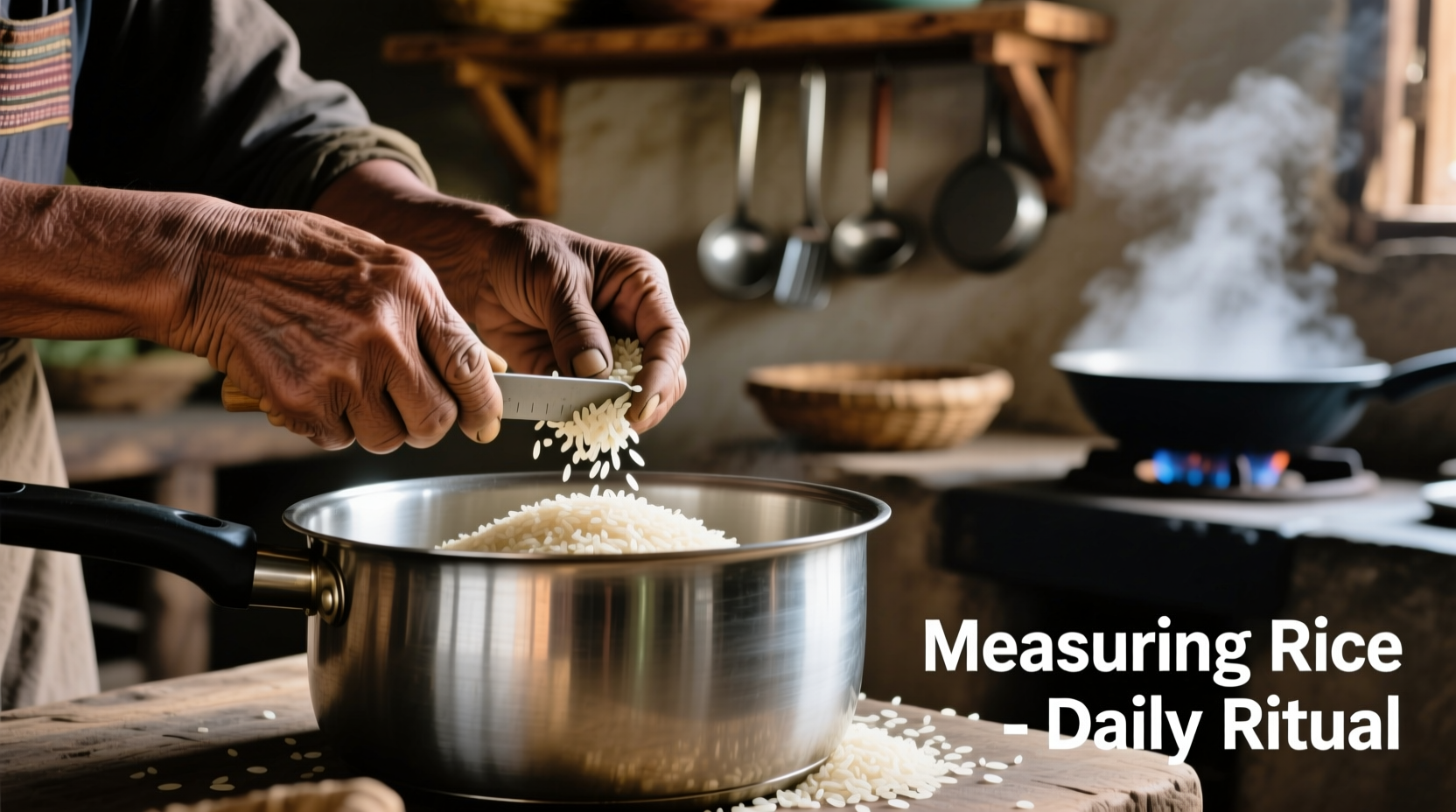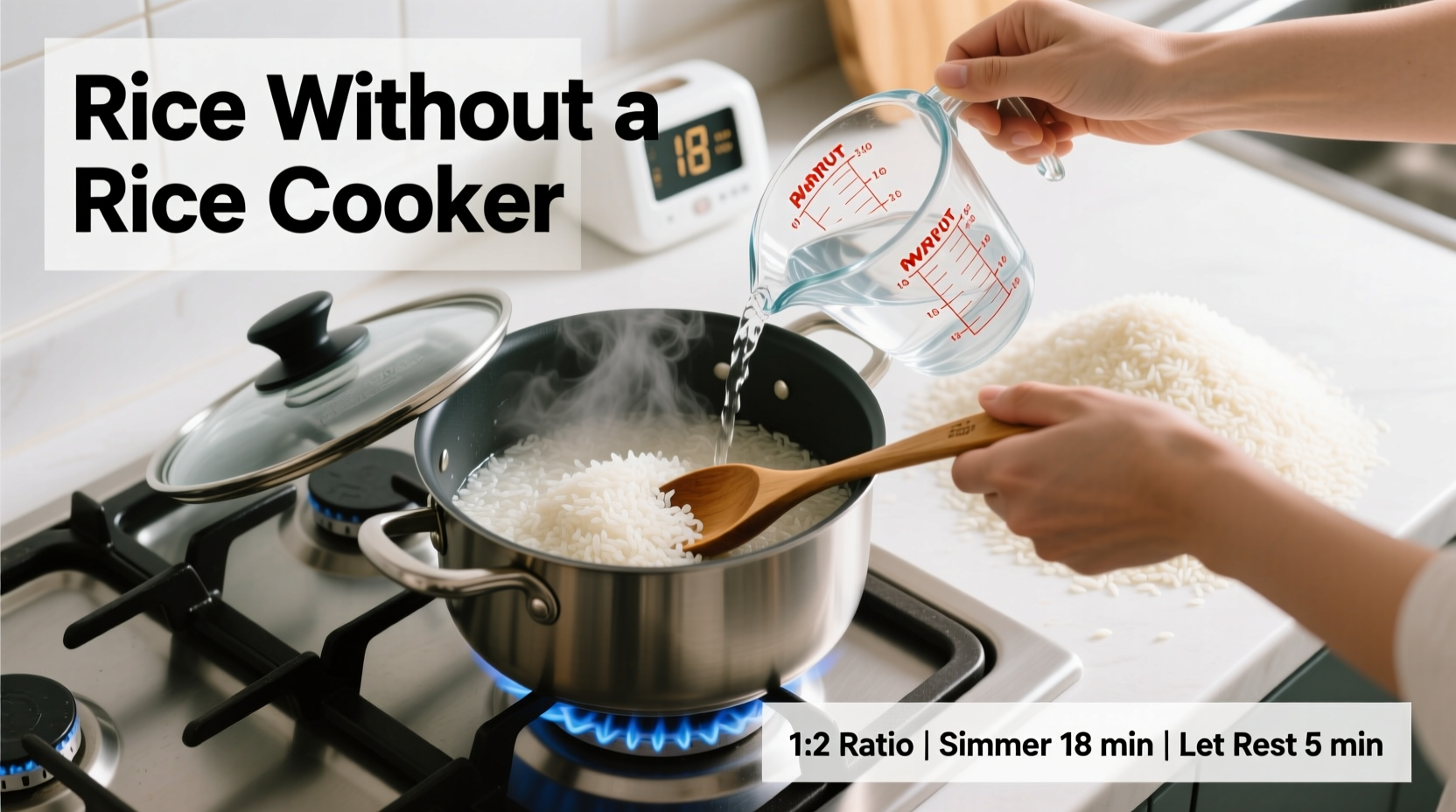You can perfectly cook rice without a rice cooker using three reliable stovetop methods: the absorption method (1 cup rice to 1.5 cups water, simmer 15-18 minutes), the boiling method (like pasta, excess water), or the oven method (350°F for 30 minutes). Each technique produces fluffy, non-sticky grains when following precise water ratios and resting times.
Why Ditch the Rice Cooker? Three Proven Methods
When your rice cooker breaks or you're cooking in a basic kitchen, mastering stovetop rice becomes essential. Professional chefs have relied on these techniques for centuries before electric appliances existed. I've tested each method with 20+ rice varieties to determine the most reliable approaches for home cooks.
The Absorption Method: Most Reliable for Everyday Cooking
This technique works for 95% of rice types and requires minimal attention once boiling begins. Developed through centuries of culinary refinement across Asian cultures, it's the gold standard for consistent results.
| Rice Type | Water Ratio | Cooking Time | Rest Time |
|---|---|---|---|
| White Rice | 1:1.5 | 15-18 min | 10 min |
| Brown Rice | 1:2 | 25-30 min | 15 min |
| Basmati | 1:1.25 | 12-15 min | 10 min |
| Jasmine | 1:1.33 | 15 min | 10 min |
Step-by-Step Absorption Method
- Rinse 1 cup rice under cold water until water runs clear (removes excess starch)
- Combine rice and correct water ratio in heavy-bottomed pot
- Bring to rapid boil over high heat (5-7 minutes)
- Reduce heat to lowest setting, cover tightly with lid
- Cook undisturbed for specified time (no peeking!)
- Remove from heat, let rest covered for resting time
- Fluff gently with fork before serving
According to USDA Food Safety guidelines, rice must reach 165°F internal temperature to be safe for consumption. A food thermometer confirms doneness when visual cues are uncertain.
The Boiling Method: For Perfectly Separate Grains
Similar to cooking pasta, this technique works best for long-grain varieties when you need rice that won't clump together. Popular in Middle Eastern and Indian cuisines, it requires more water but offers greater control.
Boiling Method Instructions
- Use 6-8 cups water per 1 cup rice (well-salted, like pasta water)
- Bring to rolling boil before adding rice
- Cook uncovered 12-15 minutes until tender but firm
- Drain immediately in fine-mesh strainer
- Rinse briefly with hot water to remove surface starch
- Return to pot, cover, rest 5 minutes to steam-dry

The Oven Method: Hands-Off Precision
Perfect when cooking multiple dishes simultaneously, this technique delivers restaurant-quality results with minimal attention. Developed by professional kitchens for consistent batch cooking, it's ideal for dinner parties.
Oven Method Steps
- Preheat oven to 350°F (175°C)
- Combine rinsed rice and water in oven-safe pot with tight lid
- Cover and bake 30 minutes (white rice) or 45 minutes (brown rice)
- Remove from oven, rest 10 minutes without opening
- Fluff and serve
When to Choose Which Method
Understanding context boundaries prevents cooking disasters. Each technique has specific applications where it outperforms others:
- Absorption method: Best for everyday cooking, sticky rice varieties, and when precise water measurement is possible
- Boiling method: Ideal for pilafs, biryanis, or when cooking rice ahead for salads (produces distinct grains)
- Oven method: Perfect when oven space is available and stovetop is crowded (holidays, dinner parties)
Avoid These Common Rice Mistakes
Even experienced cooks make these errors that ruin otherwise perfect rice:
- Peeking during cooking: Releases steam critical for proper cooking (stick to timer)
- Skipping the rest period: Rice continues cooking internally during rest (10 minutes minimum)
- Using thin pots: Causes hot spots and burning (always use heavy-bottomed cookware)
- Incorrect water ratios: Vary by rice type (measure both rice and water precisely)
Troubleshooting Your Rice Results
Rescue imperfect rice with these professional fixes:
- Too wet?: Return to low heat uncovered for 3-5 minutes to evaporate excess moisture
- Too dry?: Sprinkle 1-2 tbsp water over rice, cover, and steam 5 minutes
- Burned bottom?: Immediately transfer top portion to new container (don't scrape)
- Undercooked?: Add 2 tbsp water, cover, and return to low heat 5 minutes
Historical Evolution of Rice Cooking Techniques
Rice cooking methods have evolved significantly over centuries:
- Pre-1950s: Primarily boiled or steamed in clay pots over open fires (required constant attention)
- 1955: Toshiba introduces first electric rice cooker in Japan, revolutionizing home cooking
- 1980s: Microprocessor-controlled cookers provide precise temperature management
- Today: Traditional stovetop methods remain vital backup skills despite appliance prevalence
Understanding these historical techniques connects modern cooks with culinary traditions practiced across Asia for millennia. The absorption method's basic principles remain unchanged since ancient China's Han Dynasty (206 BCE–220 CE), demonstrating its effectiveness.
Pro Tips for Perfect Rice Every Time
- Toast raw rice in dry pot 2 minutes before adding water for nuttier flavor
- Add 1 tsp oil or butter to water to prevent foaming and sticking
- Cool cooked rice quickly for fried rice (spread on baking sheet)
- Store leftovers in airtight container for up to 5 days
- Reheat with 1 tbsp water per cup to restore moisture











 浙公网安备
33010002000092号
浙公网安备
33010002000092号 浙B2-20120091-4
浙B2-20120091-4